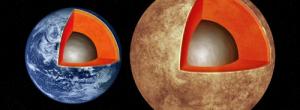Science
NASA Introduces New, Wider Set of Eyes on the Universe
After years of preparatory studies, NASA is formally starting an astrophysics mission designed to help unlock the secrets of the universe -- the Wide Field Infrared Survey Telescope (WFIRST).
- Read more
- 374 reads
Stretchable nano-devices towards smart contact lenses: Researchers at RMIT University and the University of Adelaide have joined forces to create a stretchable nano-scale device to manipulate light
The device manipulates light to such an extent that it can filter specific colours while still being transparent and could be used in the future to make smart contact lenses.
- Read more
- 374 reads
Iranian Scientists Build Fuel Cells with Appropriate Performance at High Temperature

Iranian researchers from Amirkabir University of Technology produced nanocomposite membranes that are able to improve performance of fuel cells at high temperature.
- Read more
- 345 reads
Nanocomposite Sensors Detect Toxic Gases

- Read more
- 376 reads
CU-Boulder ultrafast microscope used to make slow-motion electron movie

This is an image captured by CU-Boulder researchers using an ultrafast optical microscope shows clouds of electrons oscillating in gold material in space and time. The width of the image is 100 nanometers (about the size of a particle that will fit through a surgical mask), while the time between the top and bottom frame (10 fs, or femtoseconds) is less than 1 trillionth of a second.
- Read more
- 325 reads
Light used to measure the 'big stretch' in spider silk proteins

Public Domain
- Read more
- 317 reads
Graphene becomes superconductive -- Electrons with 'no mass' flow with 'no resistance'

This is the crystal structure of Ca-intercalated bilayer graphene fabricated on SiC substrate. Insertion of Ca atoms between two graphene layers causes the superconductivity.
- Read more
- 328 reads
Breaking cell barriers with retractable protein nanoneedles: Adapting a bacterial structure, Wyss Institute researchers develop protein actuators that can mechanically puncture cells

In this time-lapse, retractable protein actuators called "R bodies" - found naturally in certain bacteria - are seen extending from barely-visible tiny coils into long pointy tubes that are capable of rupturing cell membranes. The extension is triggered by a rise in pH level. Wyss Institute researchers have harnessed these structures and are adapting them for use in mammalian cells, which could one day lead to novel mechanisms for delivering drugs and other chemicals of interest.
- Read more
- 330 reads
Replacement of Toxic Antibacterial Agents Possible by Biocompatible Polymeric Nanocomposites

- Read more
- 309 reads
Human Rights
Fostering a More Humane World: The 28th Eurasian Economic Summi

Conscience, Hope, and Action: Keys to Global Peace and Sustainability

Ringing FOWPAL’s Peace Bell for the World:Nobel Peace Prize Laureates’ Visions and Actions

Protecting the World’s Cultural Diversity for a Sustainable Future

Puppet Show I International Friendship Day 2020


